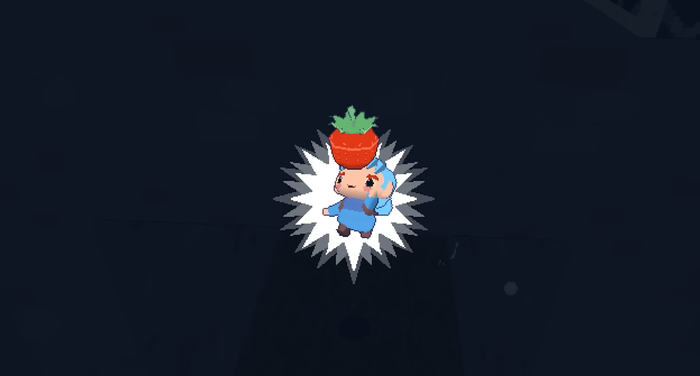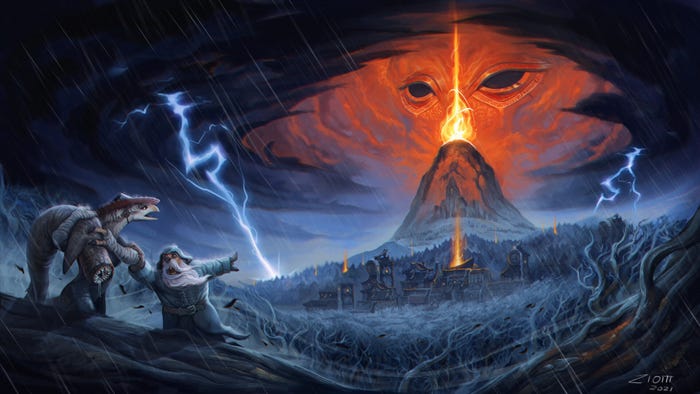
Featured Blog | This community-written post highlights the best of what the game industry has to offer. Read more like it on the Game Developer Blogs.
Want to encourage longer play sessions? Consider using looping level design.
Greg Campbell draws upon examples from Zelda 1, Dark Souls, and Divinity: Original Sin.

Divinity: Original Sin is a PC and Mac RPG from Larian Studios in the vein of Ultima VII; that is, a game focused on the interactivity in its somewhat open world. Divinity: Original Sin allows player characters to talk to animals (if these characters have the Pet Pal talent), milk cows, bake pizza, create spellbooks, sharpen weapons, have the protagonists disagree with each other for dialog options (and play a rock-paper-scissors game to determine the argument's winner) and potentially sell anything to anyone – in addition to more standard RPG fare of killing, leveling, and looting.
It was after leaving the first town of Cyseal via its north gate that I noticed this phenomenon, and one that I remembered from the original Legend of Zelda game for NES. It was a phenomenon I had consciously considered when doing level design for The Patient, a game with a similar camera view for the 2015 Global Game Jam a week before.
What was this phenomenon? Looping level design.
Let's use Zelda's overworld map as an example.
 Credit: MiniMoose2707 of GameFAQs.com. (Forum post link.)
Credit: MiniMoose2707 of GameFAQs.com. (Forum post link.)
Notice how the majority of screens have at least 2 exits, not counting exits leading to shops, caves, or dungeons. In fact, from the above picture, exactly 4 of 120 screens have only one screen exit – excluding secret exits! That helps to explain why my younger self got so lost in this game and yet why I was so engrossed in it.
So, why is loopy level design important and what have to do with Divinity: Original Sin? Based on my hypothesizing, seeing passages encourages people to keep going, to keep exploring what's there. This means there may be more exciting and interesting stuff for a player to do. Also, it often delays the feeling of, "I've been here before and done everything," turning that into, "This part seems familiar. Have I been here before? Have I done everything?" This is in contrast to dead ends (real or apparent), which clearly mark the edge of a playable space. If I know that going east from here leads to a dead end, that means once I finish in the east room, I can forget about it. The dead end room feels less continuous than if it looped back to another room later. In short, a dead end says "Stop!" while a loop says, "Go!"
A usually more frustrating form of the dead end is the invisible wall, where a player expects to be able to progress because everything looks passable, but is instead met with game designer override: The development team simply did not want you, the player, going there and put a joy-killing unremovable barrier there. Even a clearly-marked dead end would have generally suited the situation better.
Needing to 'backtrack' by completing a loop generally feels less like undesirable backtracking and more like a logical and natural progression. Perhaps this is due to a subtle or overt feeling of empowerment because there truly is a choice: Should I go backward toward the more familiar or forward and explore? Considering that exploration is a core component of many games, and finding out what lies over yonder has kept me awake way past my bedtime more times than I can count, looping has its benefits from a game design and player perspective.
Note that looping level design is different than repeating a section until the player gets it right, such as in certain castle levels of Super Mario Bros. for NES. In this repeating design, there is no ability to go back, and there is no true choice about how to go about matters. There is simply a certain number of correct and wrong paths where a correct path means progress and a wrong path means repeating that segment.
If done appropriately, looping level design makes even repetitious tasks more interesting. In a recent Dark Souls playthrough, I was farming souls (the game's currency) first by a traditional efficient method: Go to the bridge in the Undead Burg where the Hellkite Drake is, kick the ladder down to the bonfire, use the bonfire (to make enemies respawn), head back up toward the Hellkite Drake, have it kill the enemies with its fire breath, head back to the bonfire, and repeat. I felt clever when I first figured this out, but it soon felt very unengaging to me. It offered me some scenic variety, but just got old. A second way I could farm souls in and around the Undead Burg was less efficient, but more interesting and engaging: Run from the Hellkite Drake bonfire back toward Firelink Shrine, killing foes along the way. Head down toward the Undead Merchant, then up to the rooftop via the ladder, jump off the rooftop, and head toward Firelink Shrine. Rest there if desired, and do the loop again.
How does this relate to Divinity: Original Sin? One of this game's core principles is the freedom to explore, and to be rewarded for such exploration. This game uses waypoints – fast travel points – to expedite travel. Once a player has discovered a waypoint, he can return to it at any time via any other waypoint. (And, early in the game, the player gets access to an ability called 'Rift Travel,' which opens the list of available waypoints at any time outside of combat or dialog without having to visit a waypoint.) Being able to jump around the world map like this made me feel like I was in an even bigger loop. For example, I might dig up a buried treasure chest, raid its contents, and decide it's time to return to town to sell and resupply. I check out all the vendors, craft what I plan to craft, and at least 30 minutes later, I return. OK, now where was I going? Let's continue right, and thus I head right until I realize I'm a level 4 in a level 7 zone, then a level 8 zone. I'm playing on Hard my first time through. I try and try and try and realize I'm not beating this section yet, but I will in a few more levels. (It doesn't help that the Skeletal Battlemage I've finally charmed enjoys killing my team members with area effects when he's meant to be my ally!) I decide to head west from my previous waypoint instead of east and discover these guys are pretty easy! A level 3 zone? Score!
This touches on another aspect of loops – delayed loop completion for delayed gratification. As of this writing, I have yet to complete the east loop (the Old Cyseal Church), but getting a waypoint just before the fight I could not win is an encouragement to keep exploring, and to come back later when I am ready. I also feel that I've not lost any notable progress, that I can hop back into this level 8 zone when the time is right, and the game is paced well enough that the designers knew such a thing would happen and offered me a waypoint there as a bookmark for later.
To make this unmistakably clear: Looping level design is but one tool available to a game designer. Use it as it best fits a game's intended vision. May you use it well.
Read more about:
Featured BlogsAbout the Author(s)
You May Also Like









